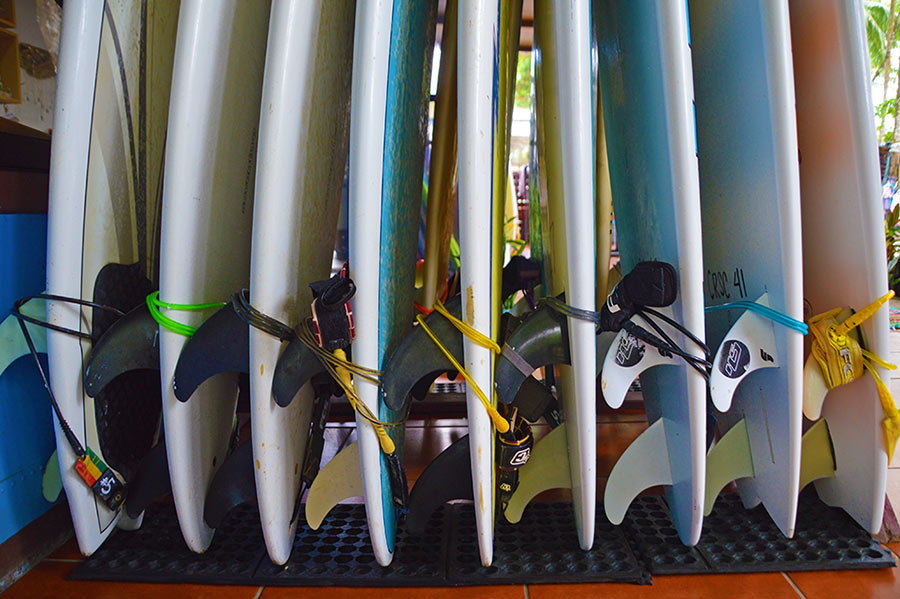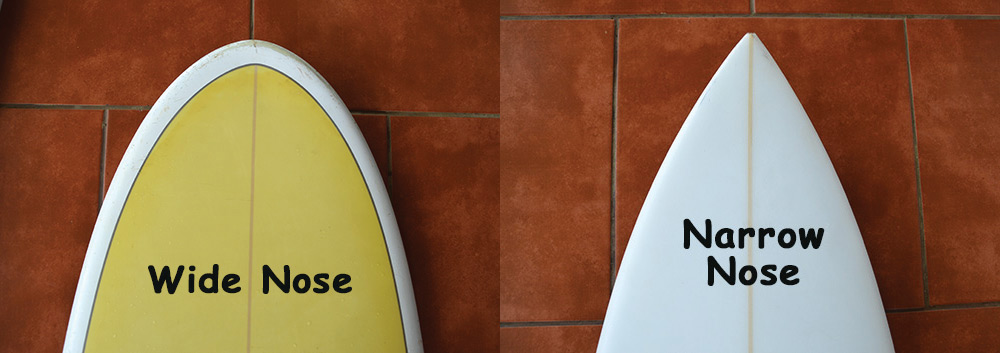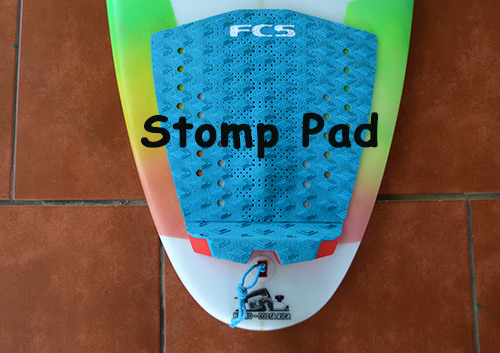July 8, 2019
Surfboards and gear vary greatly depending on a surfer’s ability, personal preference, and wave type. The Costa Rica Surf Camp team has put together a short description of the surfboard’s parts and their uses to help you pick a board that’s right for you.
Anatomy of a Surfboard
Nose: The nose is at the top of the surfboard. Its shape changes the buoyancy of the surfboard, as well as the maneuverability. If you want more buoyancy (but less maneuverability) you’ll want a wider nose. If you want more maneuverability, pick a board with a narrower nose.
Tail: The tail works similarly to the nose. The more area a tail has the more buoyant the board will be, but the less hold it will have on the face of the wave. The narrower a tail is the less buoyancy it will have, but it’ll grab on more to the waves. This is why short boards, which are designed for high-performance surfing, tend to be more narrow. On the other hand, longboards, which are meant for smaller mushier waves have a wider design.
If you’re surfing mushier waves like those at Playa Dominicalito, pick a bigger board with a wider nose and tail. We do our intermediate classes at Costa Rica Surf Camp at this spot because the waves have a slow takeoff and are great for learning.
If you’re an advanced surfer, you’ll be surfing steeper waves. You’ll want a board with a narrower nose and tail to make turns more easily. Costa Rica Surf Camp offers advanced surf lessons at Playa Dominical.
Rails: The rails, or sides, of a surfboard control how water breaks away from the board. This affects the board’s maneuverability. Soft rails are rounder, fuller, and give your board more buoyancy for smaller waves. Harder, more angled rails have less volume and are better for high-performance surfing.
Deck: The deck refers to the top of the surfboard. The thickness of a surfboard is measured from the center of the deck through to the bottom. The thickness of a surfboard is important because it is what gives the board its volume and therefore buoyancy.
Stringer: The stringer is the wooden “spine” of your board. It holds the curve of the surfboard and creates rocker, and also gives strength to the foam core of the surfboard.
Rocker: This refers to the curvature of the board from nose to tail. The general rule is the less rocker a board has, the faster it will go and will be better suited for more mellow waves. Boards with more rocker will have more lift and more drag and are so are better suited for steep waves.
Board Accessories
Leash: Your leash is attached to your ankle on your back foot. This will be your right foot if you’re regular or your left foot if you’re goofy. The leash keeps the board attached to you in the case of a fall. Your leash should measure about the same length as your board. Its thickness should be suitable for the size and power of the waves being surfed.
Fins: The fins are located on the bottom of the board and are used to give the board direction and control. So, the fins will change the way your board surfs. The fins you choose for your boards will depend on the type of surfboard, the type of wave, and the type of surfing you want to do.
Stomp Pad/Trackpad: This is a foam pad that is placed on the tail of the board. Its purpose is to give you more traction when maneuvering the board for turns.
Costa Rica Surf Camp’s surfboard specialist and surf instructors can help you find a board that’s right for you. Our Surf Shop has used boards for sale and is fully stocked with all the surf accessories you’ll need for your perfect board.





